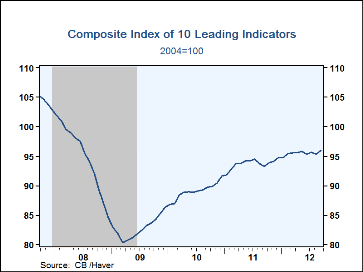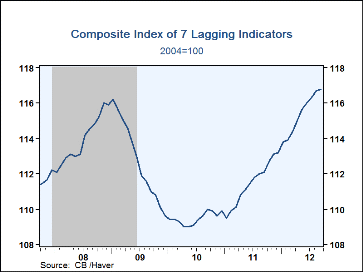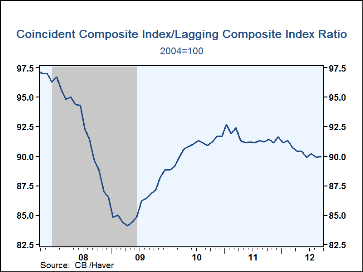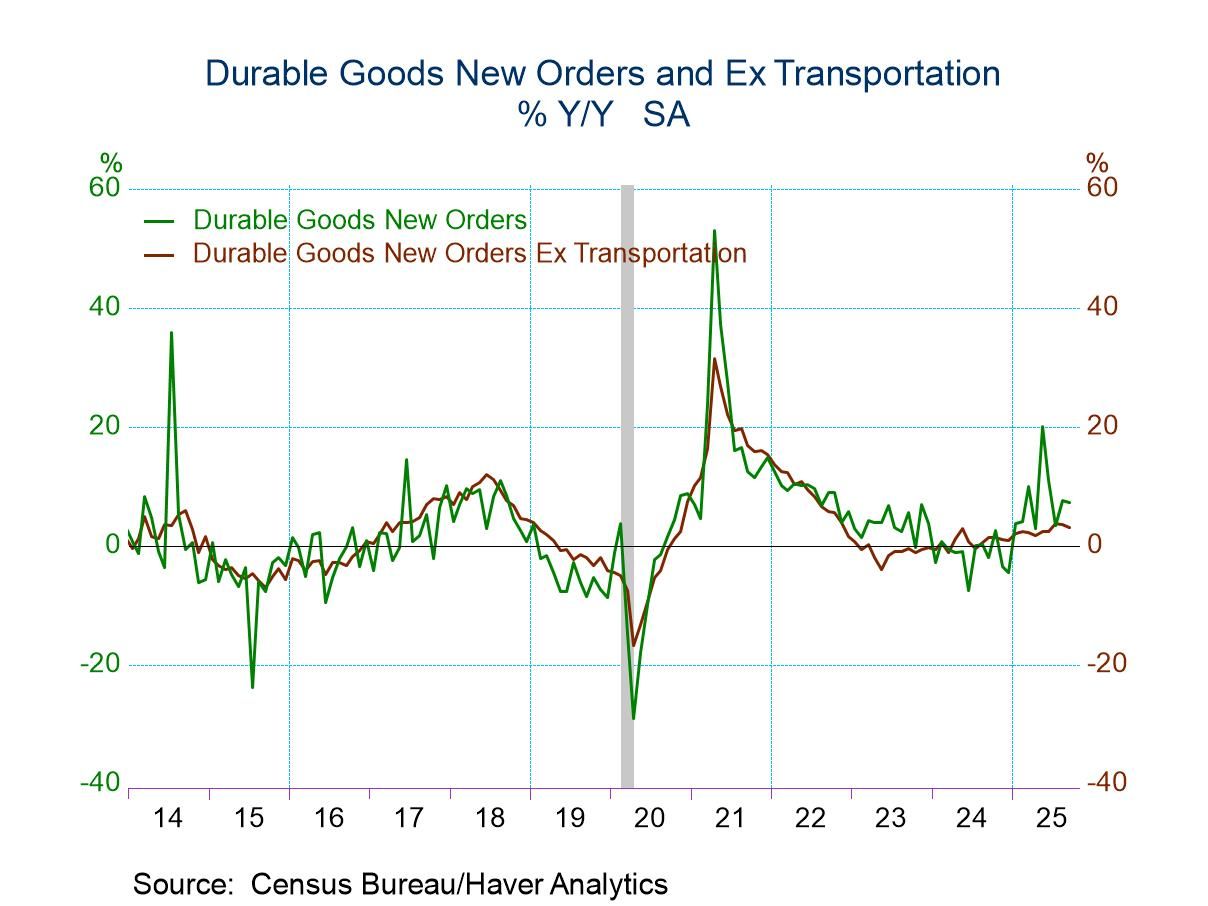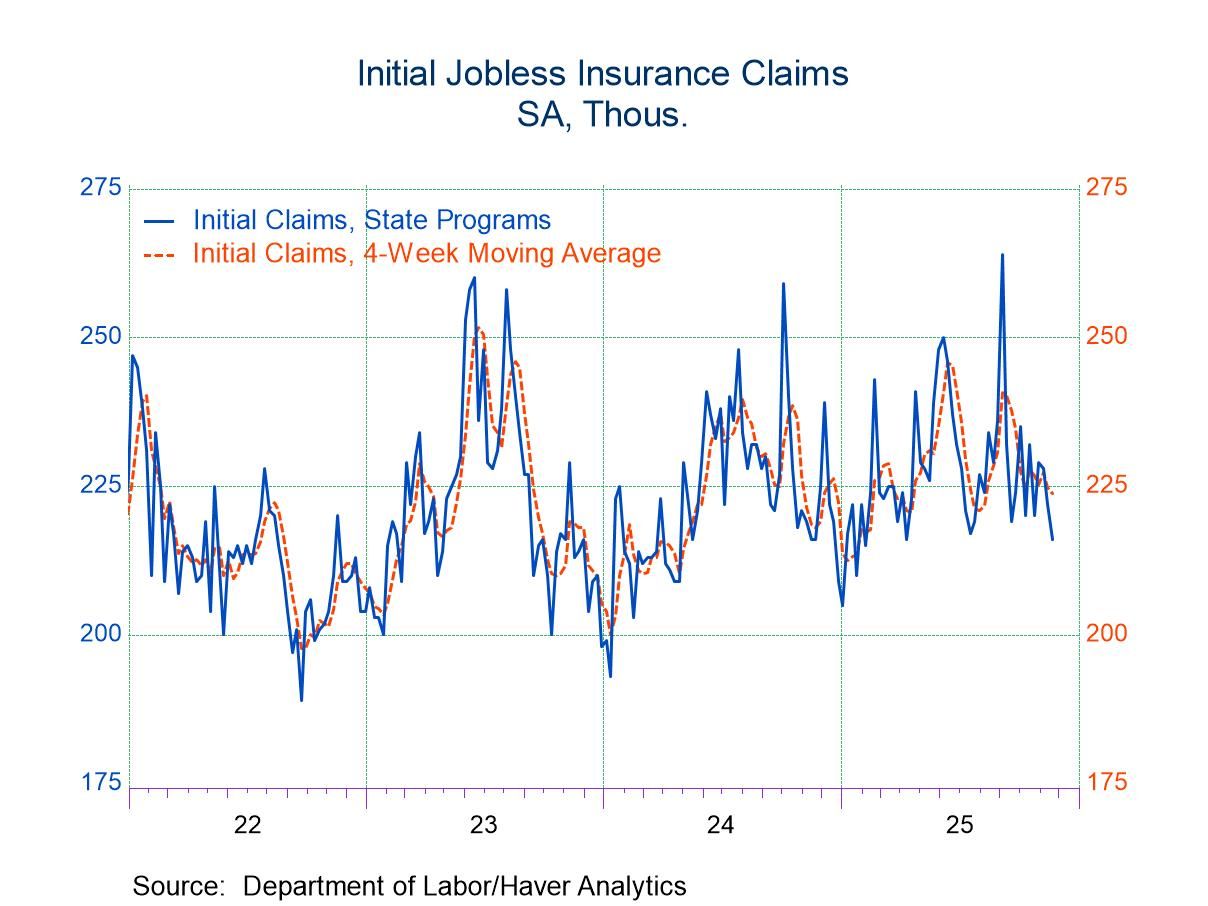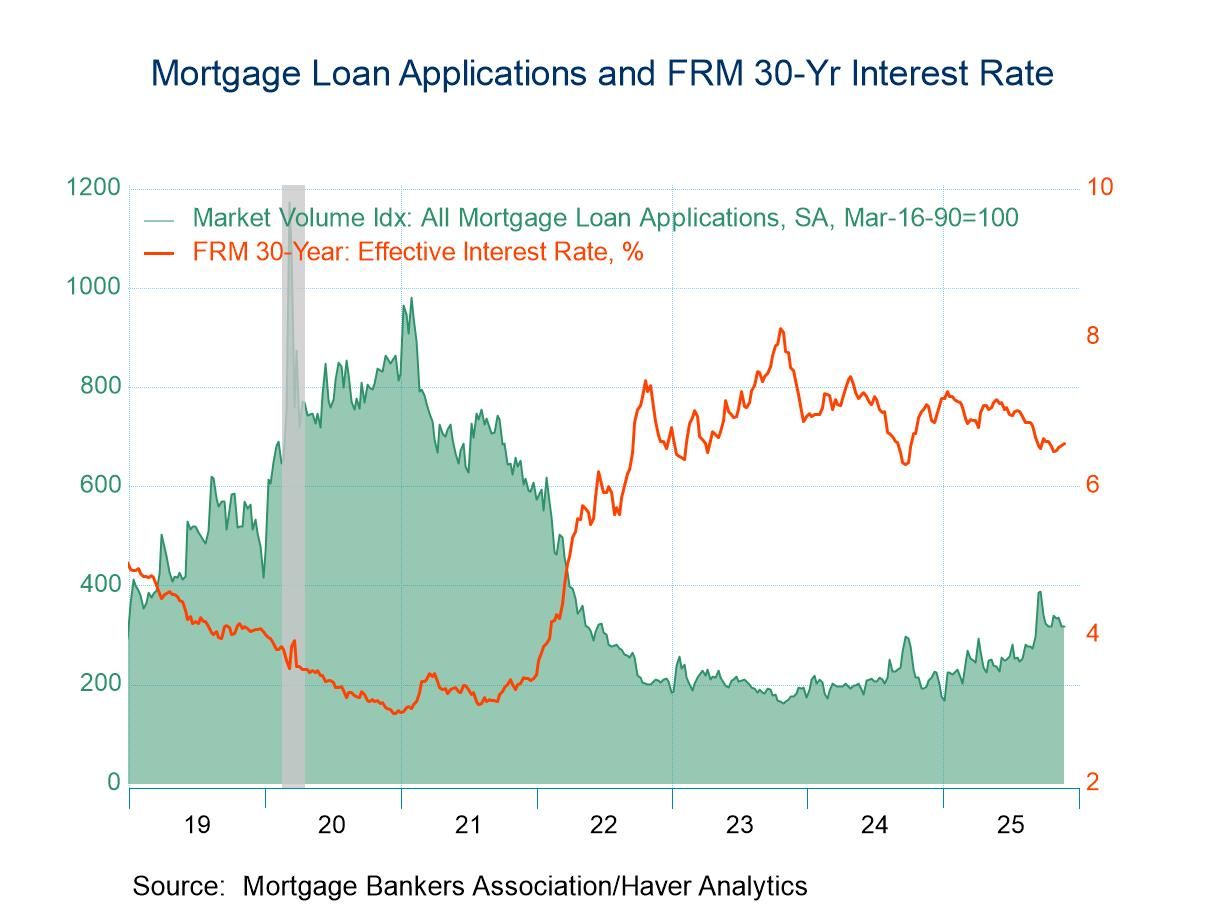 Global| Oct 18 2012
Global| Oct 18 2012U.S. Leading Indicators Recover
by:Tom Moeller
|in:Economy in Brief
Summary
The Leading Economic Indicator index from the Conference Board increased 0.6% last month following a 0.4% August decline, initially estimated at -0.1%. Sixty five percent of the component series had a positive influence on the index [...]
The Leading Economic Indicator index from the Conference Board increased 0.6% last month following a 0.4% August decline, initially estimated at -0.1%. Sixty five percent of the component series had a positive influence on the index last month, notably more building permits, a steeper interest rate yield curve and higher stock prices. These increases were offset by more initial claims for unemployment insurance, a lower ISM new orders diffusion index and lower consumer expectations for business & economic conditions.
The index of coincident indicators gained 0.2% after no change in September, initially reported as a 0.1% uptick. Each of the four component series had a positive influence on the total, notably manufacturing and trade sales. The index of lagging indicators rose 0.1% following an increased 0.3% August increase. A stronger CPI for services offset fewer commercial & industrial loans outstanding.
Another leading economic series is the ratio of coincident-to-lagging indicators. It measures how the economy is performing versus its excesses. The figure improved slightly last month but remained sharply below its high during January last year.
The Conference Board figures are available in Haver's BCI database; the components are available there, and most are also in USECON. The forecast figure for the Consensus are in the AS1REPNA database. Visit the Conference Board's site for coverage of leading indicator series from around the world.
Policy Initiatives in the Global Recession: What Did Forecasters Expect? from the Federal Reserve Bank of New York is available here.
| Business Cycle Indicators (%) | Sep | Aug | Jul | Y/Y | 2011 | 2010 | 2009 |
|---|---|---|---|---|---|---|---|
| Leading | 0.6 | -0.4 | 0.4 | 2.9 | 5.2 | 7.6 | -12.8 |
| Coincident | 0.2 | 0.0 | 0.6 | 2.8 | 2.8 | 2.5 | -7.7 |
| Lagging | 0.1 | 0.3 | 0.3 | 4.2 | 1.8 | -2.9 | -1.0 |
Tom Moeller
AuthorMore in Author Profile »Prior to joining Haver Analytics in 2000, Mr. Moeller worked as the Economist at Chancellor Capital Management from 1985 to 1999. There, he developed comprehensive economic forecasts and interpreted economic data for equity and fixed income portfolio managers. Also at Chancellor, Mr. Moeller worked as an equity analyst and was responsible for researching and rating companies in the economically sensitive automobile and housing industries for investment in Chancellor’s equity portfolio. Prior to joining Chancellor, Mr. Moeller was an Economist at Citibank from 1979 to 1984. He also analyzed pricing behavior in the metals industry for the Council on Wage and Price Stability in Washington, D.C. In 1999, Mr. Moeller received the award for most accurate forecast from the Forecasters' Club of New York. From 1990 to 1992 he was President of the New York Association for Business Economists. Mr. Moeller earned an M.B.A. in Finance from Fordham University, where he graduated in 1987. He holds a Bachelor of Arts in Economics from George Washington University.


